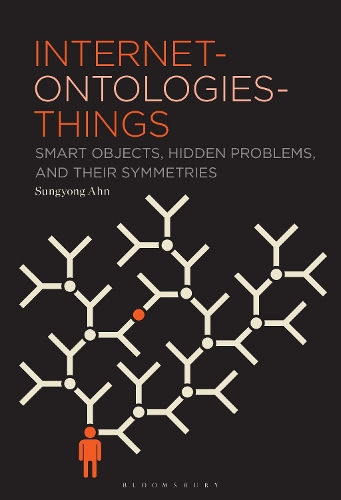
Internet-ontologies-Things: Smart Objects, Hidden Problems, and Their Symmetries
(Paperback)
Available Formats
Publishing Details
Internet-ontologies-Things: Smart Objects, Hidden Problems, and Their Symmetries
By (Author) Sungyong Ahn
Bloomsbury Publishing PLC
Bloomsbury Academic USA
29th May 2025
United States
Classifications
Professional and Scholarly
Non Fiction
Impact of science and technology on society
004.678
Physical Properties
Paperback
208
Width 148mm, Height 226mm, Spine 14mm
300g
Description
Internet-ontologies-Things explores how power mobilizes algorithmic and ontological objects, for example smartwatches and smart buildings, to uncover hidden problems within the physical domains of the IoT. One popular approach of software studies in recent times is to think of algorithmic objects like the things in what is known as the Internet of Things (IoT) as ontological agents to the same extent as the humans who use them. While post-humanist philosophies, such as speculative realism and object-oriented ontology, have provided a theoretical foundation for this methodological elevation of objects to autonomous and sentient beings, the complicity between this philosophical discourse and the material transformation of our everyday lives, which are embedded with these smart objects, remains relatively underexplored. Within this constantly changing infrastructure, Internet-ontologies-Things: Smart Objects, Hidden Problems, and their Symmetries reveals a new form of economic and political power whose algorithmic governance finds its legitimacy in our newly cultivated paranoia about unknown and perhaps unknowable computational problems. In its examination of our smart world, this book illuminates the mechanisms by which this power mobilizes various algorithmic and ontological objects, from smart wearables to smart buildings, to identify a greater number of hidden problems within the physical domains of the IoT, from city sidewalks to the nerves and organs of our very own bodies.
Reviews
The timing of the publication of Sungyong Ahns Internet-Ontologies-Things is propitious, following a year of energetic debates and panics about what life is and will become with an emerging regime of relatively autonomous forms of artificial intelligence, such as the autonomous capacities attributed to chatbot technologies. Ahns theoretical reflection on the design and ontology of Smart Objects and the Internet of Things, from the 2010s to the present, offers a valuable point of reference for addressing questions that currently, alas, are peripheral to many of these debates. This book introduces new questions and insights into philosophical accounts of ontology and phenomenology, into theories of human and non-human synergies, and for applications of governmentality in studies of contemporary forms of power. It proposes new and useful starting points and directions for cultural studies that have long placed human agency (over non-human agency) at the center of the study of culture and media-making. It also offers a very timely template for rethinking what has long been the preferred definitions of and questions about media in Media and Communication Studies. So, there is much to welcome about this ambitious book, as a reference for rethinking the current moment. * James Hay, Professor of Media Studies, University of Illinois Urbana-Champaign, USA *
This bracingly original take on the impending Internet of Things invites the reader to consider what is really at work in the promise of full submission to automated systems: the optimization of everything. When all the objects in our worlds can speak to one anotherand to us as yet another objectthe under-used capacity of the world brain is externalized. We are only using a tiny percentage of what can be known: the apparatus can use it all. There is a highly speculative element of both critique and hope in this prospect. The result is a brilliantly generative and thought-provoking analysis that will reframe our understanding of the shape of our increasingly networked lives. * Mark Andrejevic, Professor of Communications and Media Studies, Monash University, Australia *
Author Bio
Sungyong Ahn is Lecturer in Digital Studies at the School of Communication and Arts at the University of Queensland, Australia. He has written extensively on the elusive materiality of digital objects, their ontological status, and the speculative economy of the media industry.
